Diego Javier Luis: A Few Missing Visuals of the Crisis/ Unos Visuales Ausentes de la Crisis
- October 12, 2022 - December 07, 2022
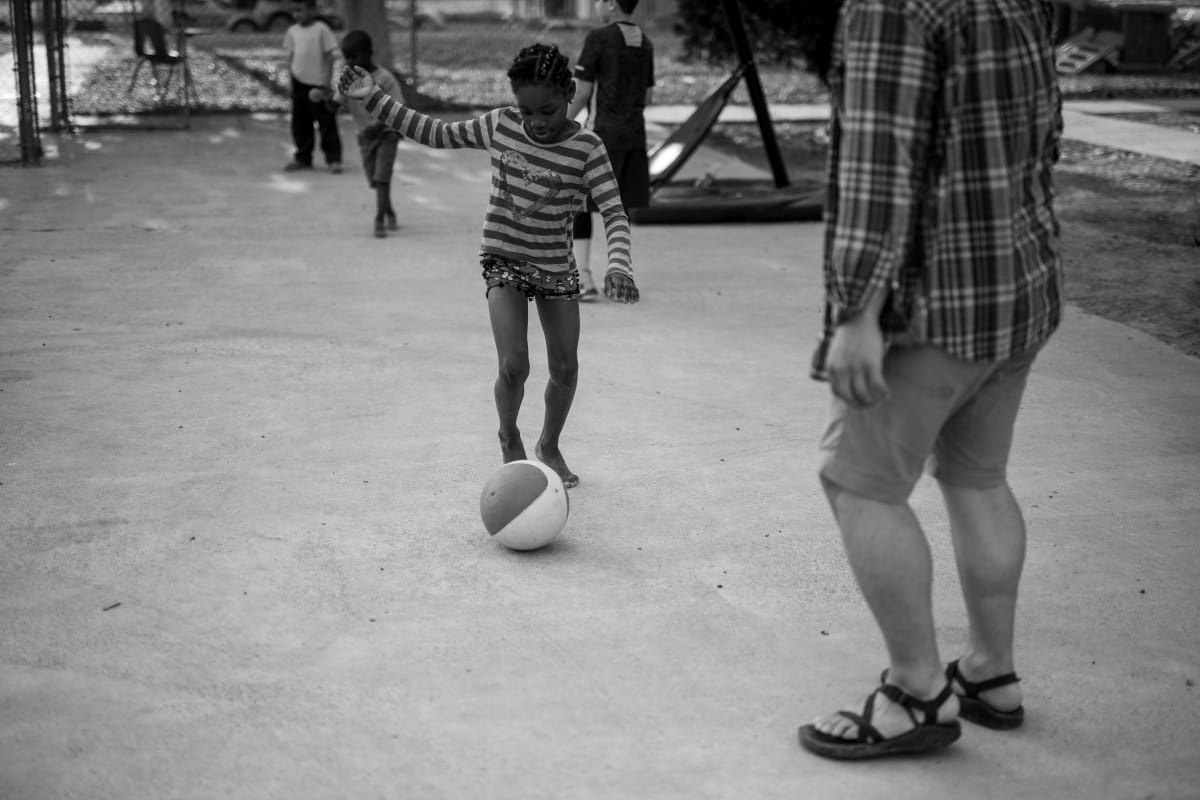
The Holding Institute II, Digital print

Crystal City Digital print From 1943 to 1946, around 1500 innocent Japanese Latin Americans and hundreds of Japanese Americans were incarcerated at a camp in Crystal City, TX, for their perceived association with an enemy state, the Empire of Japan. Julian Saporiti of the musical group No No Boy walks across the ruined foundations to a water tank, the lone memorial standing on a forgotten corner of what is now a high school campus. The song that Saporiti wrote on this site is available at the QR code below. A short drive away, the tactics of mass incarceration persist.
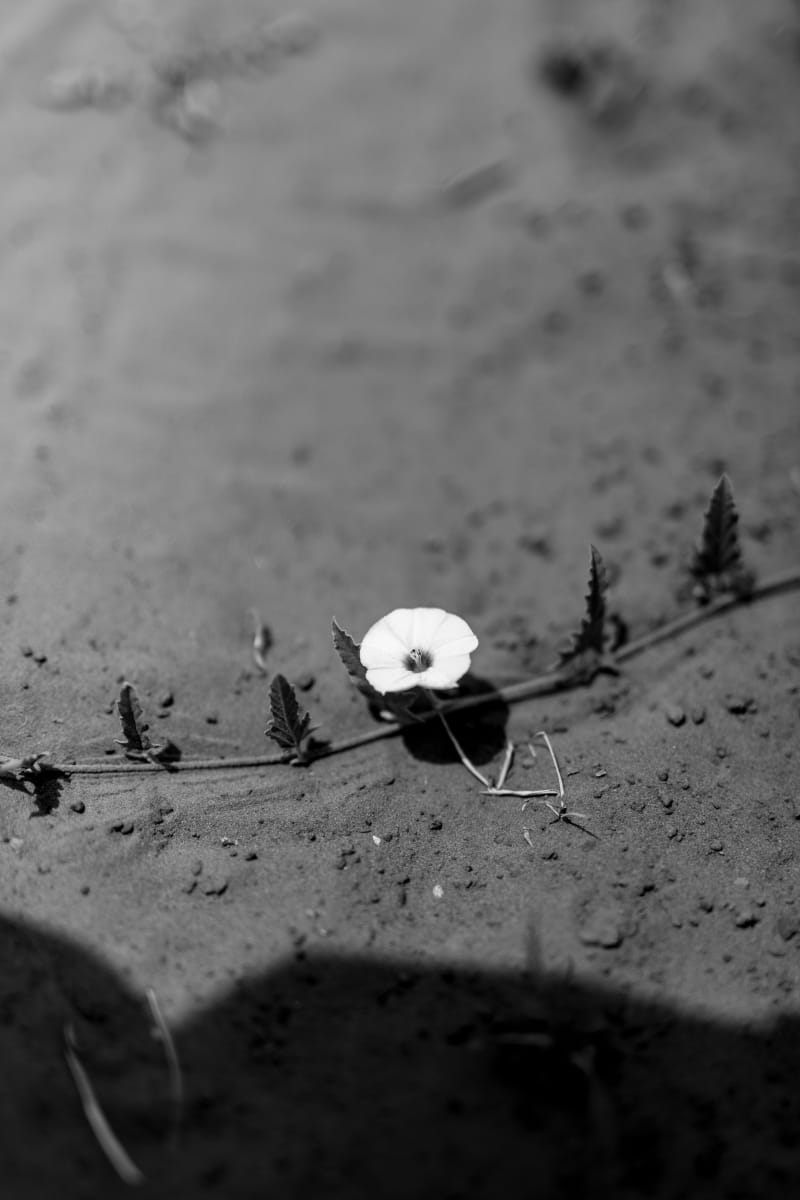
Persistence Digital print In Dilley, TX, a flower extends across a dirt chasm against all odds. Shortly after taking this photo, a man in a pickup truck stopped next to me and asked if I was an “illegal.”
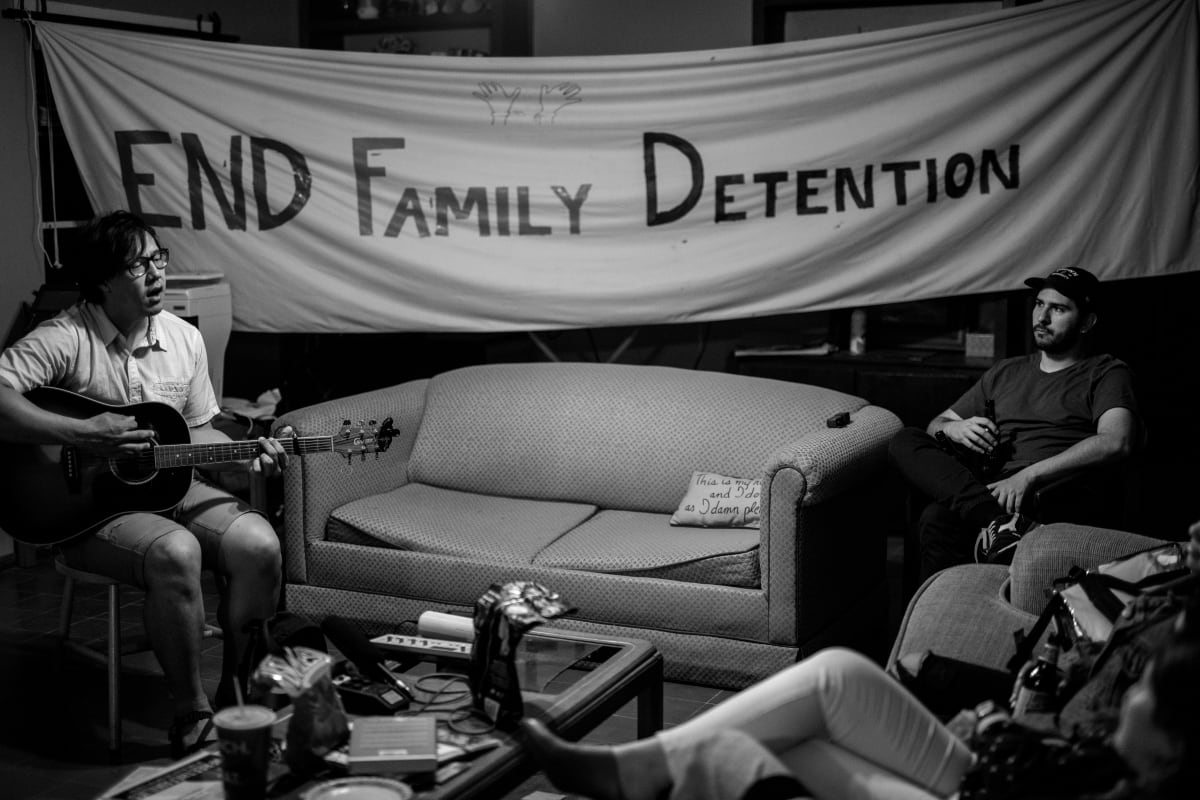
No No Boy Digital print Julian Saporiti of No No Boy plays an impromptu concert for the Dilley Pro Bono Project, a group of young lawyers, assistants, and interpreters volunteering to assist immigrants and asylum seekers detained in Dilley, TX. Use the QR code below to listen to the song he wrote on this site, now part of the album, 1975.
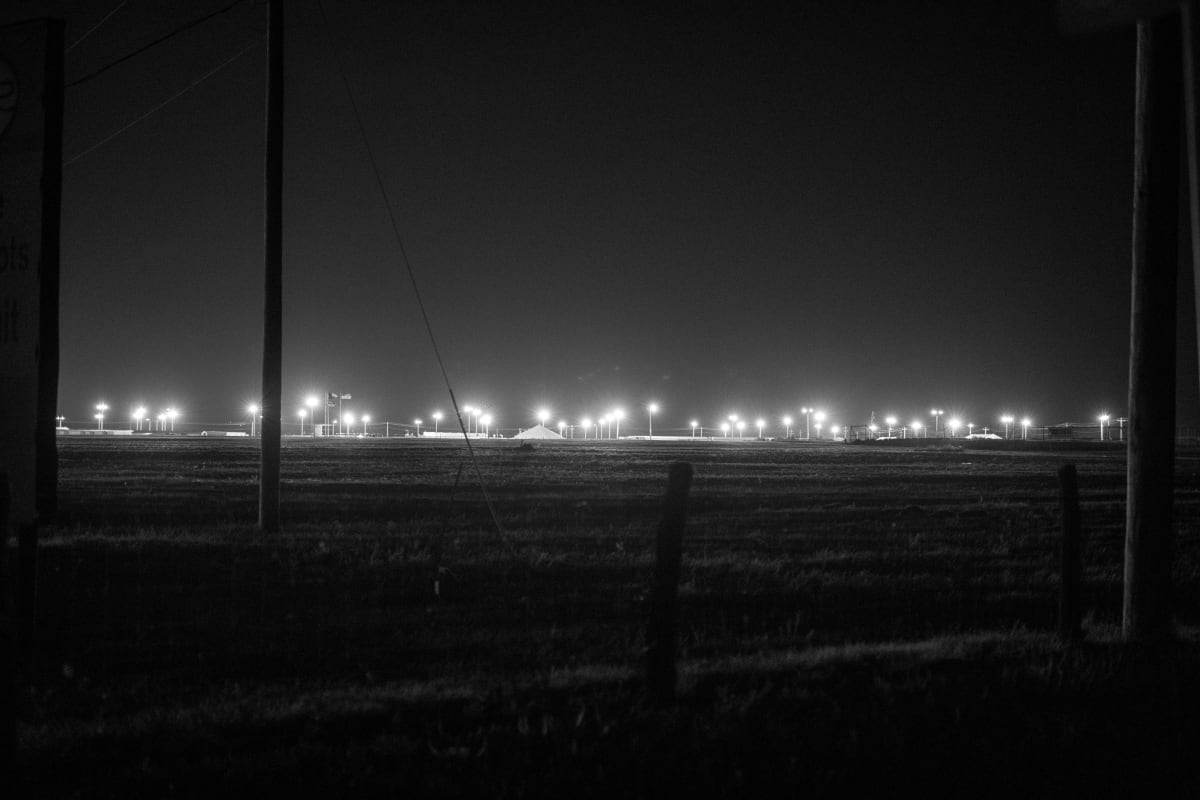
Dilley Detention Digital print With the spurious name of “South Texas Family Residential Center,” this detention site is the largest in the U.S. with a capacity of 2400 and plans to expand. It draws an enormous amount of electricity to ensure flawless surveillance of the people imprisoned within. The detained migrants frequently attest to sexual abuse, hunger, malnutrition, physical and verbal violence, frigid rooms, sleep deprivation, lack of access to translators, and more. Standing here, it was impossible not to think of the foundations that once supported rows of barracks in nearby Crystal City. From the atrocities of the mid-century to now, perhaps less has changed than we would like to imagine.
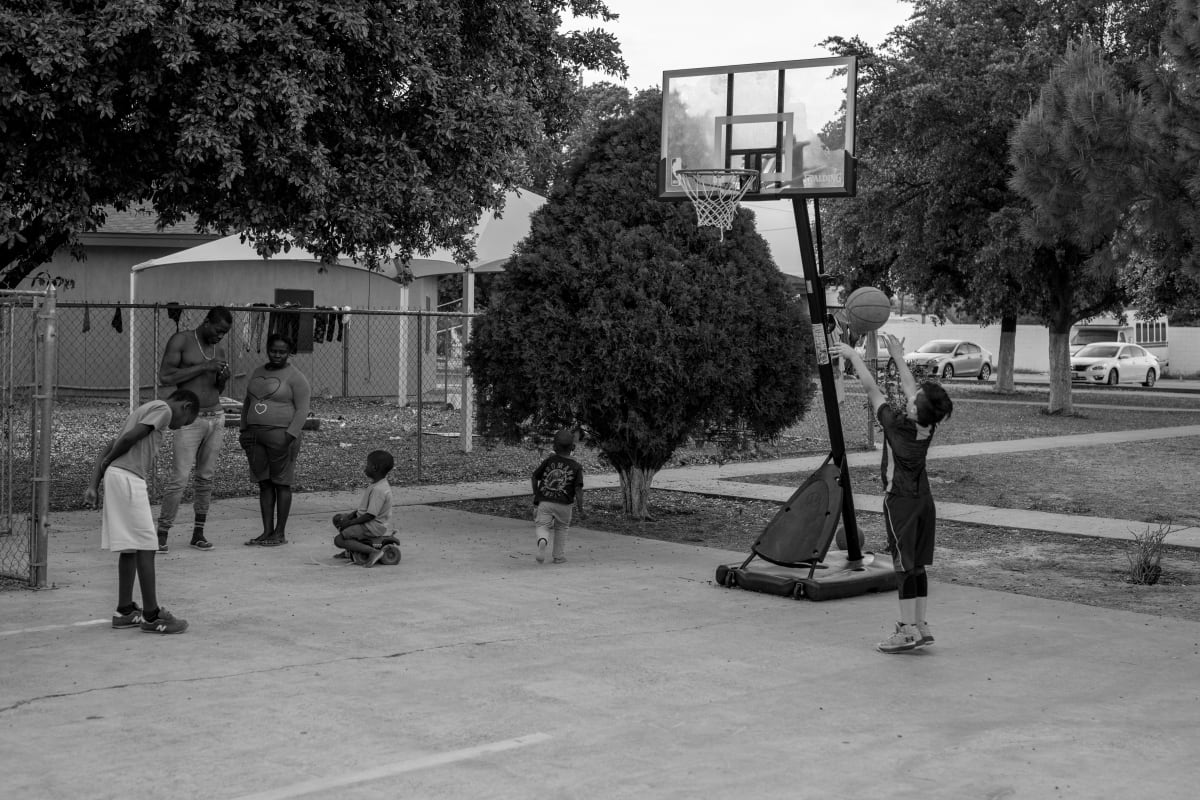
The Holding Institute I Digital print The Holding Institute name is a rather unfortunate double entendre for what it does. Founded as a Methodist seminary in the late-nineteenth century, the Institute received its name from its turn-of-the-century superintendent, Nannie Emory Holding. Today, it offers housing, food, spiritual guidance, and language classes to migrants recently released from nearby detention centers with nowhere to go. Some are children hoping for their parents to arrive; others are searching for a sibling or trying to contact families in other states. The Holding Institute operates as a refugee camp providing

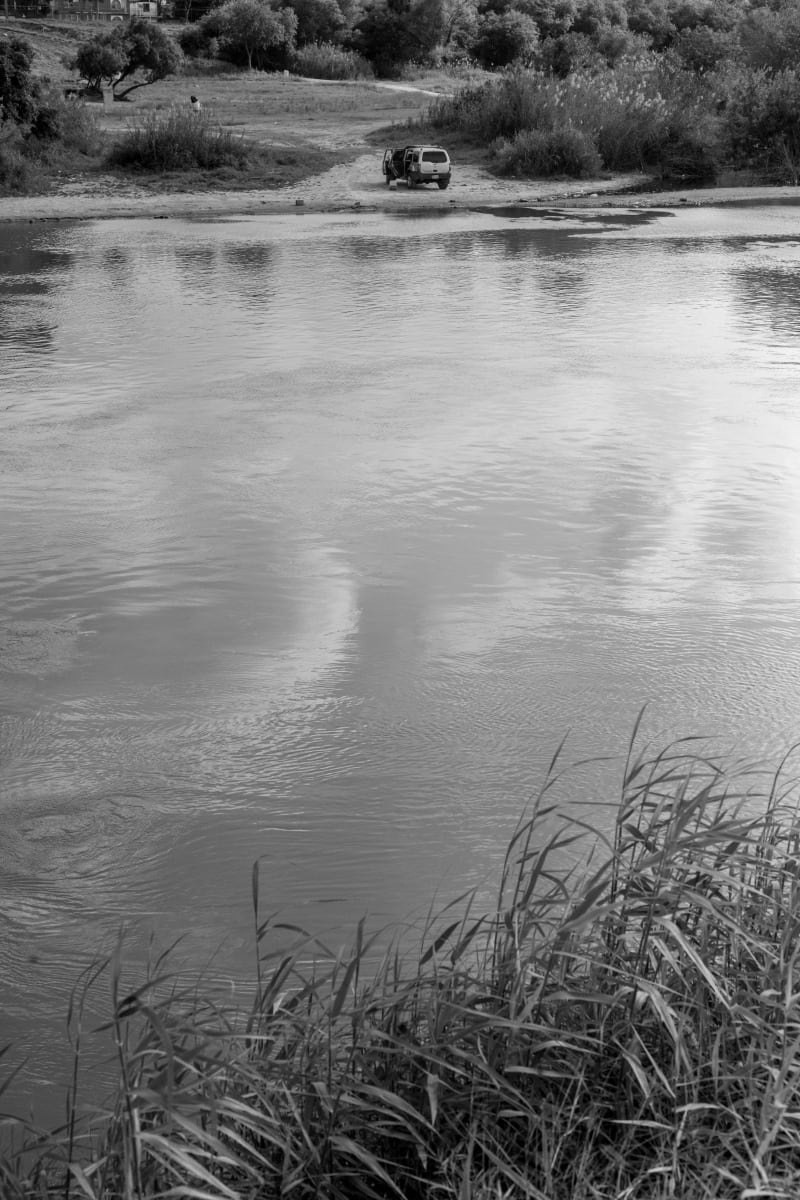
Borderland Digital print For most people following the headlines from their smart phones, “the border” is an abstract concept. It exists only as a nameless desert or an inhumane wall extending into the ocean. Here, we see the border as the Río Grande bifurcating Laredo on the Texas side from Nuevo Laredo on the Mexican side. In this place, the border is abstract in a different way, for the two worlds are, in fact, deeply entangled. In the immortal words of Los Tigres del Norte, “Yo no crucé la frontera, la frontera me cruzó.” [I did not cross the border, the border crossed me.].
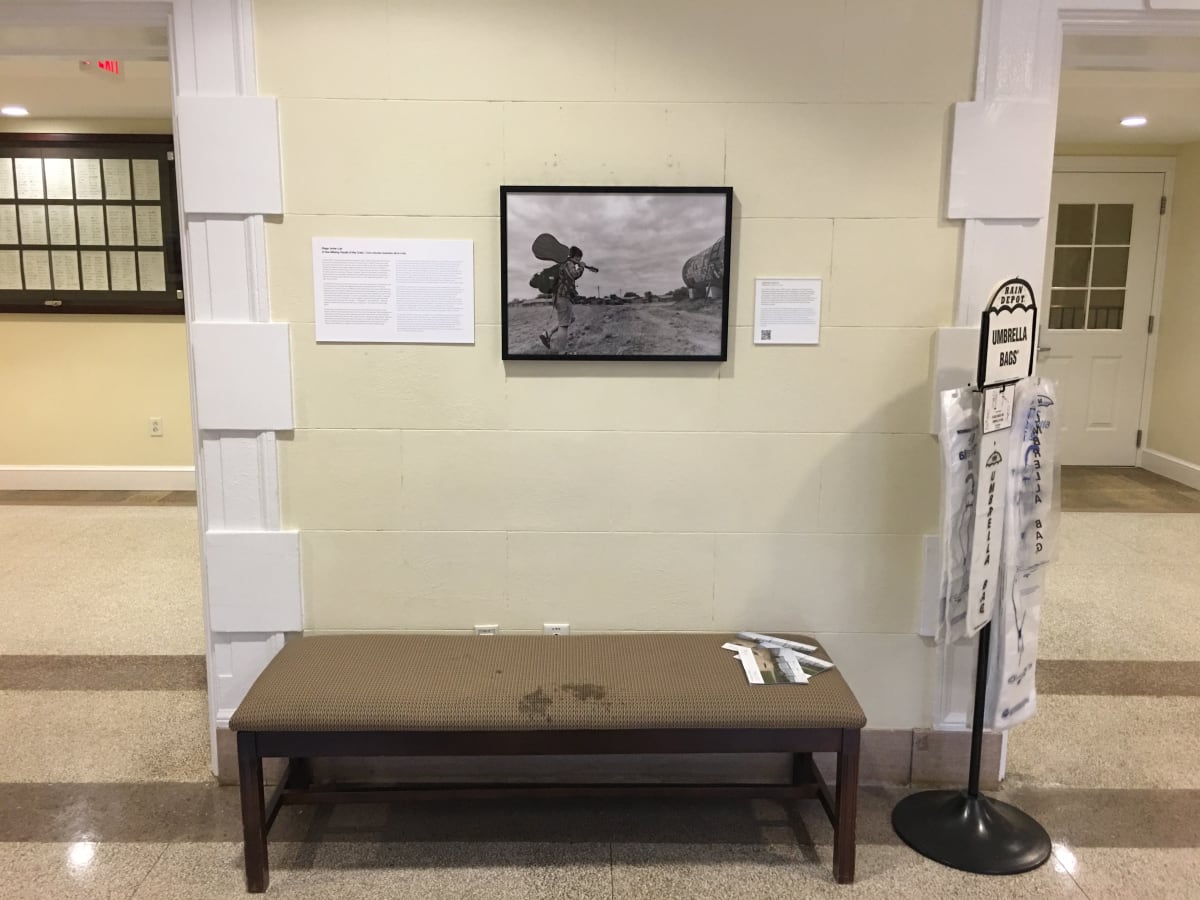
Crystal City
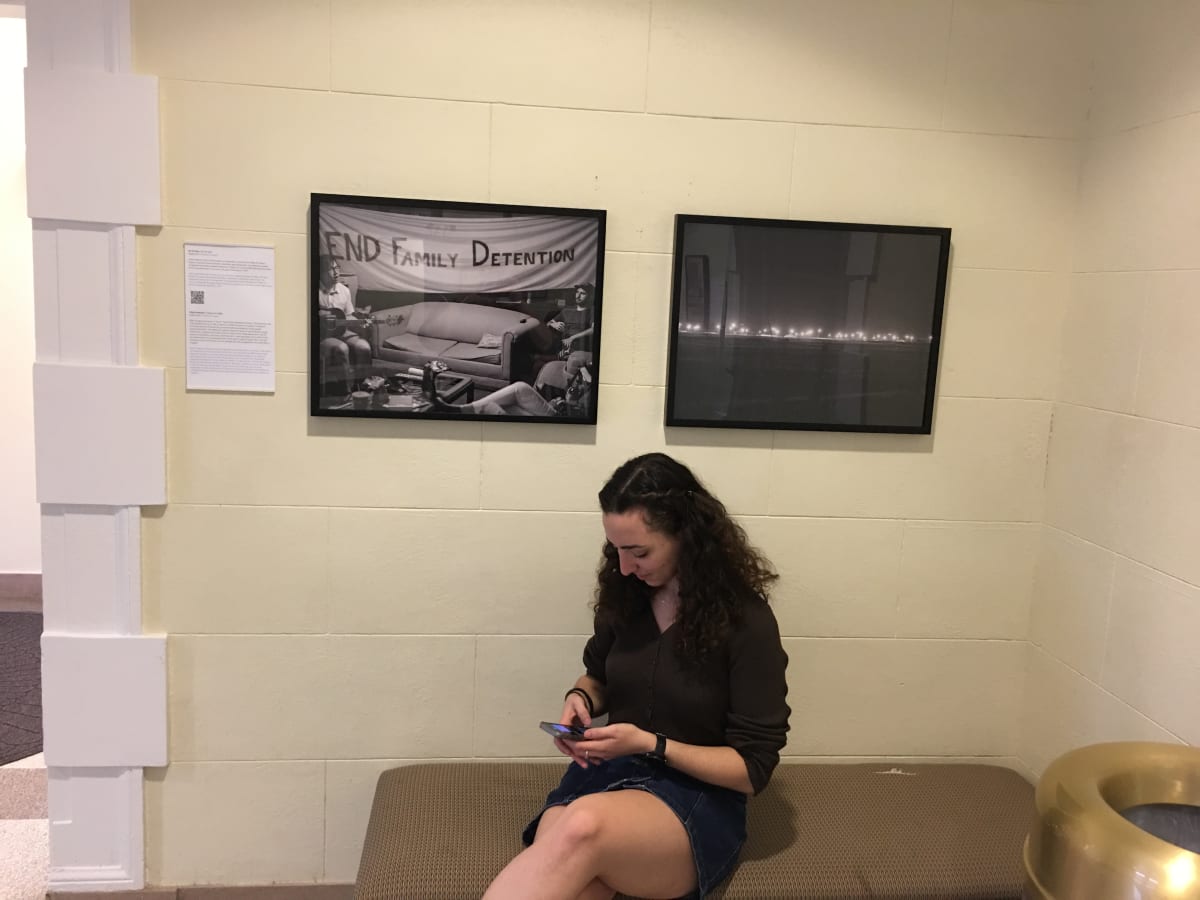
No No Boy & Dilley Detention

Persistence & Borderland
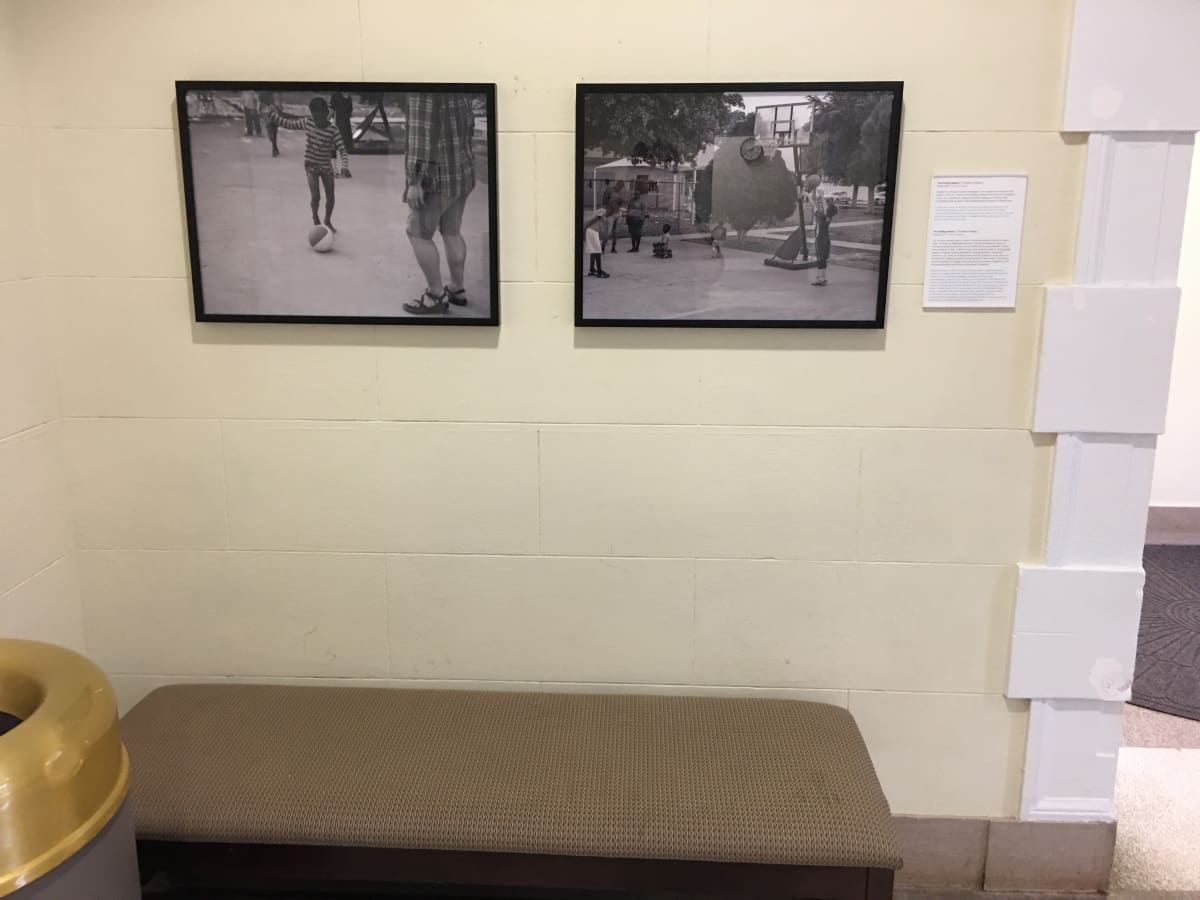
The Holding Institute II & The Holding Institute I

In March 2019, three graduate students traveled to South Texas to document the historical and current immigration detention crises from Crystal City to Laredo. The trip occurred during the last years of the Trump era, when migrants seeking asylum from gang-related and gender-based violence were categorically denied relief. They often still ended up confined in detention facilities for a month and longer awaiting a decision. Simultaneously, the administration’s notorious “Remain in Mexico” policy had just been implemented earlier that year, so some asylum seekers were already being deported from detention to Mexico where they made makeshift camps to wait out their legal hearings, which could take many months.
I documented the journey in black and white to cast these experiences in an historical lens and, furthermore, to parallel the Japanese American and Japanese Latin American incarceration in Crystal City during WWII with the present-day crisis nearby. Beholding the sprawling detention center in Dilley and speaking with asylum seekers in Laredo gave the sickening feeling of cyclicality, that the land still bore the marks of earlier traumas and that they were being played out today in an even more egregious, fanatical fashion. I wanted to bring the crisis out of abstraction, to put images to words that have become almost mythical in public discourse, like “border,” “immigration,” and “detention.” What do these oft-repeated concepts look like if you’re standing in the places that bear these scars?
Furthermore, the documentation of the trip was multimodal in the sense that Julian Saporiti of No No Boy wrote and performed music at all of these sites. With a background studying and creating music about Japanese American incarceration as well as his own family story of fleeing the Vietnam War, Saporiti’s sonic reflections graft together what are commonly considered disparate migratory histories. In Crystal City, Dilley, and Laredo, Saporiti crafted songs that speak to these entangled histories. In the photos of this collection that feature him, viewers are invited to follow the links to these songs.
En marzo de 2019, tres estudiantes de posgrado viajaron al sur de Texas para documentar la crisis de las detenciones de inmigrantes tanto en la actualidad como a lo largo de la historia. El viaje tuvo lugar durante los últimos años de la presidencia de Trump, una época en la que los inmigrantes solicitantes de asilo de la violencia de bandas y de género fueron categóricamente denegados la asistencia y ayuda correspondientes. Era común que acabaran confinados en centros de detención por un mes o más a la espera de un veredicto. De manera simultánea, la política infame de la administración de “Permanecer en México” fue implementada ese mismo año, así que algunos solicitantes de asilo ya estaban siendo deportados a México donde crearon campamentos improvisados mientras esperaban sus audiencias legales, que podrían tardar varios meses.
Documenté el viaje en blanco y negro para proyectar estas experiencias a través de un prisma histórico y, aún más, para establecer vínculos de conexión entre las detenciones de japoneses-americanos y japoneses-latinoamericanos en Crystal City durante la Segunda Guerra Mundial con la crisis actual e inmediata. Contemplar el inmenso centro de detención en Dilley y hablar con los solicitantes de asilo en Laredo produjo una repugnante sensación de circularidad, que la tierra aún atestigua las huellas de traumas pasados y que estos se estaban reproduciendo de forma aún más fanática y atroz. Quise sacar la crisis de la abstracción y poner imágenes a las palabras que se habían convertido en algo casi mitificado dentro del discurso público, palabras como “frontera”, “migración” y “detención”. ¿Cómo vemos y percibimos estos conceptos frecuentemente repetidos si nos encontramos en esos mismos lugares que padecen estas cicatrices?
Es más, documentar el viaje fue un proceso de multimodalidad ya que Julian Saporiti de No No Boy escribió y tocó música en cada uno de estos lugares. Dada su formación estudiando y creando música que trata la detención japonés-americana junto con su propia historia familiar de huir de la Guerra de Vietnam, los reflejos sónicos de Saporiti sintetizan lo que comúnmente se consideran historias migratorias dispares. En Crystal City, Dilley y Laredo, Saporiti confeccionó canciones que tratan estas historias entrelazadas. En las fotos de esta colección donde sale, se les invita a los espectadores a abrir los enlaces de estas canciones.
